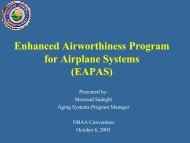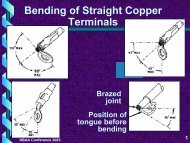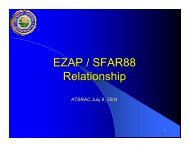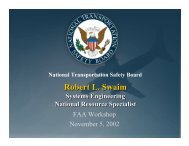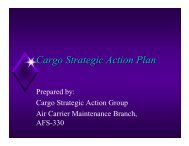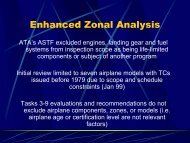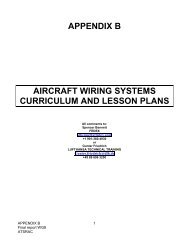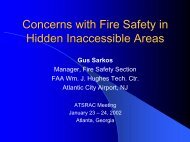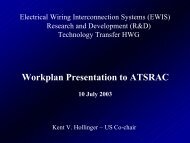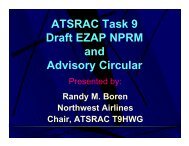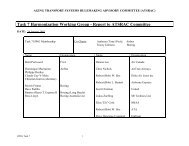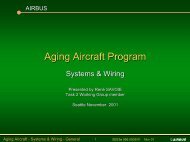Airport Capacity Benchmark Report 2001
Executive Summary - Center for Advanced Aviation System ...
Executive Summary - Center for Advanced Aviation System ...
- No tags were found...
Create successful ePaper yourself
Turn your PDF publications into a flip-book with our unique Google optimized e-Paper software.
Dallas – Fort Worth International <strong>Airport</strong> <strong>Benchmark</strong>s• The current capacity benchmark at Dallas-Ft. Worth is 261-270 flights per hour in good weather.• Current capacity falls to 183-185 flights (or fewer) per hour in adverse weather conditions, which mayinclude poor visibility, unfavorable winds, or heavy precipitation.• Dallas operates below its good-weather capacity throughout the day but these traffic rates cannot besustained in adverse weather.• In 2000, Dallas was ranked tenth in the country in number of flights significantly delayed (more than15 minutes). It has slightly more than 2% of its flight delayed significantly.• Dallas has 9 well-defined periods of highly concentrated arrival and departure traffic during the day.• In adverse weather, capacity is lower and scheduled traffic exceeds capacity roughly 5 hours of theday. The percentage of significantly delayed flights doubles to 4%.• A new runway, scheduled to open in 2007, is expected to improve Dallas capacity benchmark by 3%(to 269-278 flights per hour) in good weather and by 17% (to 215-217 flights per hour) in adverseweather. This assumes that airspace, ground infrastructure, and environmental constraints allow fulluse of the runway.• In addition, technology and procedural improvements, when combined with the new runway areexpected to increase the Dallas capacity benchmark by a total of 4% (to 272-281 flights per hour) ingood weather over the next 10 years.• The adverse weather capacity benchmark will increase by a total of 21% (to 222-224 flights per hour)compared to today.• These capacity increases could be brought about as a result of:– Quadruple parallel instrument approaches.– pFAST, which assists the controller with sequencing aircraft, for a better flow of traffic into theterminal area.– ADS-B/CDTI (with LAAS), which provides a cockpit display of the location of other aircraft and willhelp the pilot maintain the desired separation more precisely.– FMS/RNAV routes, which allow a more consistent flow of aircraft to the runway.• Demand at Dallas – Fort Worth is expected to grow by 21% over the next decade. The plannedimprovements, particularly those related to adverse weather, are expected to keep delays at or belowcurrent levels despite relatively high demand growth.



